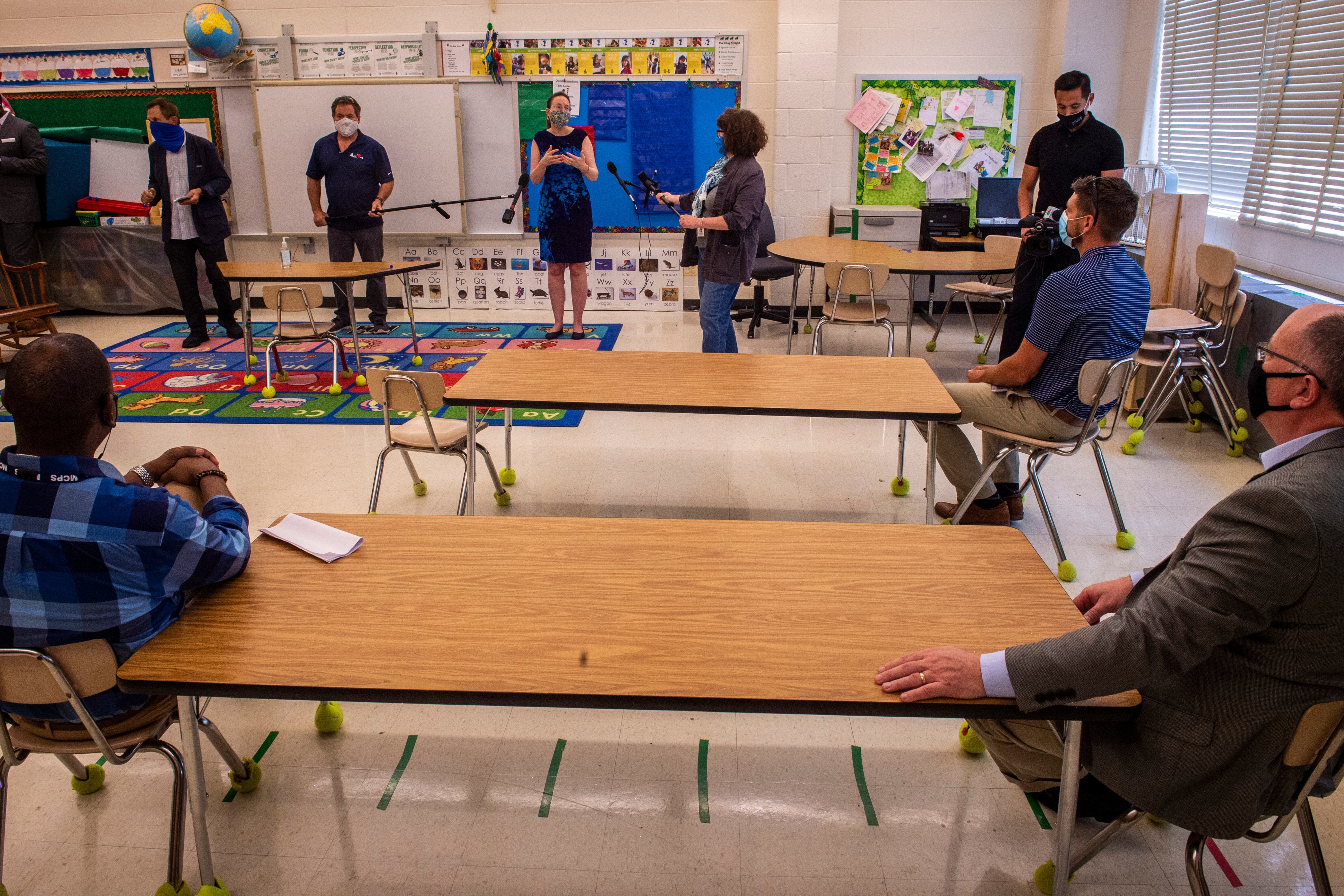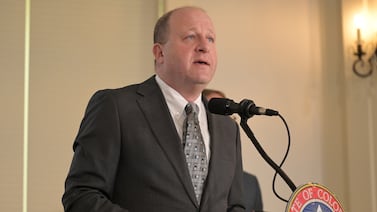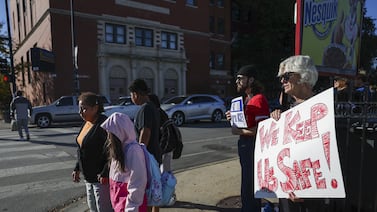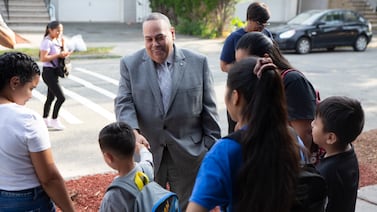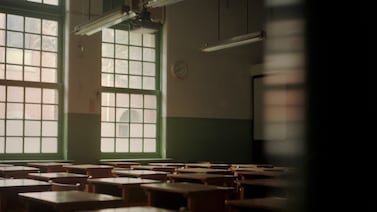Perhaps it took a pandemic to realize just how closely schools and the economy are intertwined.
That’s not just because closed school buildings exacerbate a child care crisis that limits parents’ ability to work. It’s also because public schools are themselves a major source of American jobs — 8 million, prior to the coronavirus pandemic — and because learning loss can affect students’ abilities years later, which has economic consequences.
The symbiotic relationship between schools and the national economy has a chorus of economists arguing for billions in federal support for schools — money that would help them reopen where possible, avoid laying off staff, and give students the time and attention they need to fill in academic gaps.
“The time for you to cut back spending is not when your house was destroyed in fire,” said Tim Bartik, an economist at the Upjohn Institute for Employment Research who has projected that there will be large state budget gaps that, in turn, will affect schools. “That’s the time to borrow to rebuild it.”
Schools employ millions, and layoffs could have a ripple effect
Schools’ biggest expense are the people they employ, which means if budgets shrink, schools are likely to lay off staff. The scale could be vast: Already, the threat of budget cuts and building closures, making some roles obsolete, have led to 500,000 layoffs or furloughs in public education.
Actual budget cuts could make things even worse. The National Education Association projects that in a worst-case scenario, 1.9 million people in K-12 and higher education could lose their jobs without federal intervention. Many private schools are also facing financial stress.
Some education analysts have argued that schools should aggressively lay off staff, putting them in a better position to weather cuts, especially if buildings remain closed. But such layoffs would likely mean a slower overall economic recovery, since workers without jobs don’t spend money as they typically would.
“You don’t want to lay off these bus drivers — you’re going to need them again,” said Katharine Strunk, an education researcher at Michigan State University. “And secondly, people have jobs and families.”
“It’s not simply the people who work for the schools or for state governments or for local governments who will be affected,” said Bartik. “It would also be other workers ... who depend on these workers going out and buying things.”
To protect those jobs, schools need to be able to pay their workers. Congress is currently wrangling over how much money to provide states to help fill large budget shortfalls. House Democrats passed a bill allocating $500 billion, but Senate Republicans’ proposal includes no money for state budgets.
“The single most useful policy action now would be to provide substantial aid to state governments,” Christina Romer, a professor of economics at the University of California, Berkeley and former chair of the Council of Economic Advisers, wrote in in May. “States are facing severe budget shortfalls and will soon have to cut vital spending on public education, infrastructure and social services.”
When federal dollars are used to protect or create local government jobs, economists have found a “multiplier effect”: every $1 spent produces more than $1 of economic benefit.
Schools provide child care, allowing parents to work
Many working parents rely on schools to provide child care. The longer schools remain closed, the harder it will be for many parents to return to work or continue working.
That has also been the case the Trump administration has made in its fierce push to reopen schools; Senate Republicans have proposed conditioning some federal aid “on schools offering at least some in-person instruction.”
In one sense the concerns about the economy are clearly valid. “You can’t go back to a normal economy without kids in school,” said Strunk.
But the virus’s continued spread complicates schools’ ability to play that role, and simply cajoling and threatening school officials to open campuses is unlikely to solve the problem. Parents and teachers remain wary of returning to school buildings. And even when schools do physically reopen, all students won’t necessarily return. One survey found that two-thirds of parents were very or somewhat likely to opt for virtual learning in the fall if given the choice.
That could force more parents to stay home, especially mothers, who are disproportionately responsible for childcare. If that happens, the economic impact could be steep: Families’ incomes would fall and the economy would grow more slowly.
One study found that when schools in Argentina closed due to frequent teachers strikes, mothers’ incomes dropped, while fathers’ incomes were unaffected. The scale of the current pandemic is even larger and could do more lasting damage.
“We’re going to see what happens as women choose to take time out, as they scale back their hours, as they get sidelined in their jobs,” University of Michigan economist Betsey Stevenson recently told Politico. “All of those things will mean they’re in a worse position in four and five years’ time than they would have been without the pandemic.”
Schools are where kids acquire the knowledge and credentials that ultimately boost the workforce
School budget cuts and shaky remote instruction could have longer-term implications for the economy too.
Both affect the quality of education students are receiving. States that cut more education funding during the last recession saw declines in test scores and college enrollment. And children who are educated less well are less likely to succeed in the economy as adults.
That’s not to say that a few months of subpar learning will knock all of America’s students permanently off course. But the combination of factors — lengthy spells of uneven remote instruction, school budget cuts, economic and family stress because of the virus — could set children back academically in a way that has long-term effects.
A national study found that students also made more money as adults when they attended better funded schools. A study from Argentina found that students who missed school due to lengthy teacher strikes earned 2% to 3% less as adults, ultimately costing the national economy roughly $2 billion. And an international study found that countries with higher test scores tend to have stronger economies.
Without federal budget help, schools could have to make steep budget cuts. During the last recession, school budgets in most states didn’t recover for several years.
“There’s a huge concern about learning loss already,” said Bartik. “If the educational sector is suffering from lack of funding, it’s not going to be able to respond to that. And that’s going to have long-term costs.”

